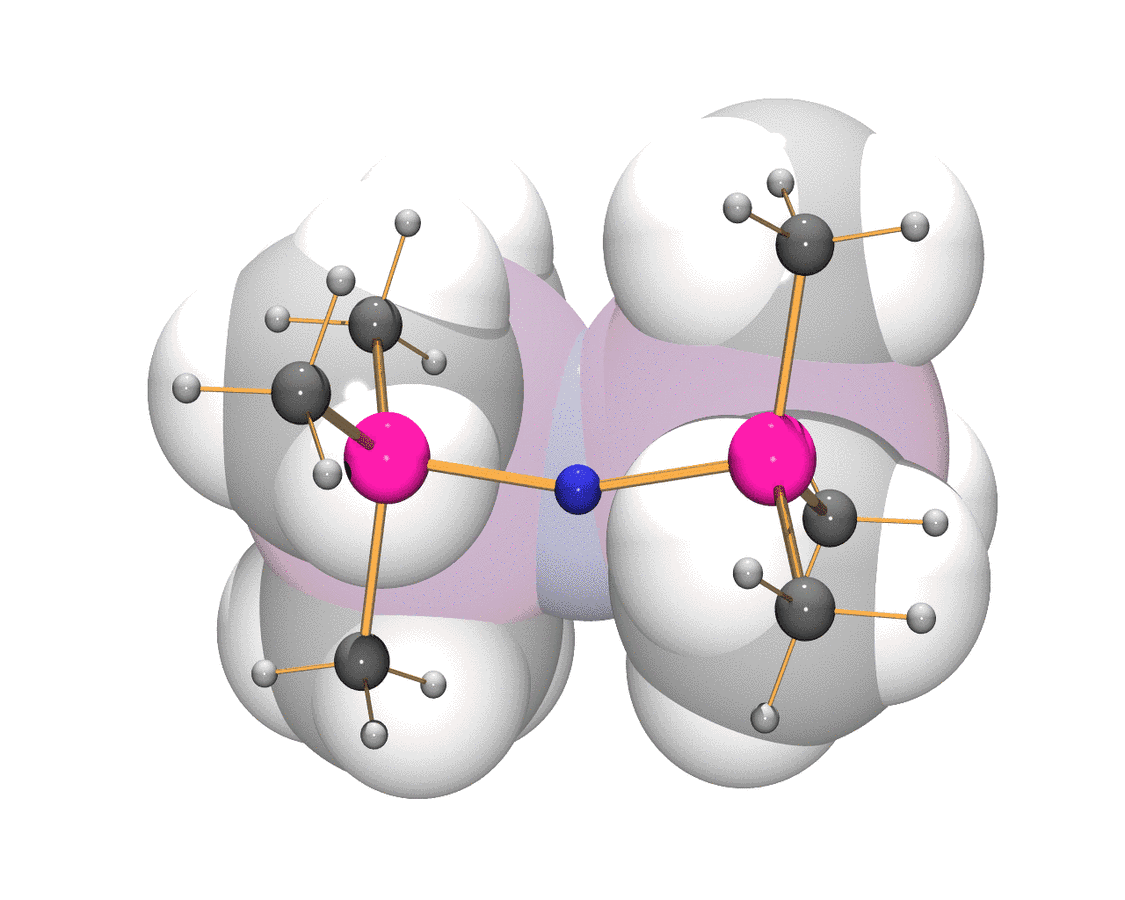Halogen - Pseudohalogen Chemistry
Part of our reseach with weakly coordinating anions is their utilization to stabilize reactive cations such as halonium and pseudohalonium ions. Since it is possible to isolate halonium species of the type R-X-R+ (X = F, Cl, Br, I) it was to prove if this is also possible for the so-called pseudohalogens. And by doing this to prove and extent the pseudohalogen concept. The pseudohalogen concept still provides a powerful tool to understand the correlation between chemical properties, structure and bonding of pseudohalogen species.
General considerations. The term pseudohalogen was first introduced by Lothar Birckenbach in 1925 and further developed and justified in a series of papers in the following years [1b-1d]. The anions CN–, CNO–, N3–, OCN–, and SCN– can be coined classical linear pseudohalides. A small species can be classified as a classical pseudohalogen when it fulfills the following criteria with respect to a halogen-like chemical behaviour: A pseudohalogen (X) forms
- a strongly bound (linear) univalent radical (X×),
- a singly charged anion (X–),
- a pseudohalogenhydrogen acid of the type HX,
- salts of the type M(X)n with silver, lead and mercuric salts of low solubility,
- a neutral dipseudohalogen compound (X–X) which disproportionates in water and can be added to double bonds, and
- interpseudohalogen species (X–Y).
However, not all criteria are always met. While many linear pseudohalogens (e.g. CN, OCN, CNO, N3, SCN) are known, often the corresponding pseudohalide acids, dipseudohalogens, and interpseudohalogens are thermodynamically highly unstable (e.g. HN3, OCN–NCO, NC–SCN) with respect to N2/CO elimination or polymerisation or indeed, remain unknown (e.g. N3–N3).
Classical linear Pseudohalides. Starting from the binary non-metal hydrides CH4, NH3, H2O etc. a simple approach can be utilized to derive the hydrogen acids of the classical linear pseudohalides by combining or substituting isolobal (e.g. HCN in HCN, HN=/=N=N in HN3, HO–/–CN in HOCN,), isosteric (e.g. N2/CO in HN3/HNCO) or isoelectronic fragments (e.g. CO/CS in HOCN/HSCN).
Nonlinear resonance-stabilized pseudohalides can be derived with the help of the Grimm hydride displacement law, a pseudoelement concept established as early as 1925. This law describes the formation of a new pseudoelement ×AHn when nH (n = 1 – 4) atoms are formally added to the element A. The new complexes AHn (e.g. OH, NH2 and CH3) behave like pseudoatoms (in this case like halogens) similar to elements of the group n positions to the right in the periodic table (e.g. they form single charge anions: OH–, NH2–, and CH3–, or neutral dimers: HO–OH, H2N–NH2 and H3C–CH3). However, chemically there is a significant difference in the basicity between these pseudohalides and the halides as the latter represent only very weak bases while these pseudohalides are strong bases. Only the successive substitution of the hydrogen atoms in CH3 (CH3–) and NH2 (NH2–) by electron-withdrawing groups such as CN, NO, and NO2, leads to the class of resonance-stabilized, nonlinear pseudohalogens (pseudohalides). Important is also the capability of the electron-withdrawing groups to delocalize the single p-AO-type lone pair (AO = atomic orbital) of the C and N atom in CH3 (CH3–) and NH2 (NH2–), respectively, to decrease the basicity into the range of the halides. A compilation of all resonance-stabilized methanides, [CR1R2R3]– (R1,2,3 = H, NO2, NO, and CN).
Generalization. Substitution of H by electron-withdrawing groups (R) in CH3/NH2/OH resulting in new pseudohalogens CR3–, NR2– and OR– is not limited to R = CN, NO or NO2. All electron-withdrawing groups R which are capable of delocalization of the central carbon/nitrogen lone pair can be used (OR–, RINR–, RICR2–, (RI)2CR– with R = NO, NO2, RICO, RISO2, (RI)2PO, RIaRIbPO, C6F5, CF3 etc; and RI = H, alkyl or aryl), additionally variation and permutation of different groups also results in the formation of a pseudohalide (e.g. NRaRb–, CRa(Rb)2–, C(Ra)2Rb–, CRaRbRc–, RICRaRb– and RIaRIbCR–). More complex pseudohalides can also be constructed when linear or non-linear pseudohalides are utilized e.g. HC(N3)2–, C(N3)3–, HC(C(CN)3)2–, C(C(CN)3)3–, C(NO)3– etc.
Extension of the pseudohalogen concept. The pseudohalogen concept can be extended
- to some special non-planar anions such as CF3–,
- to heavier elements (isovalence electronic exchange O by S, Se, Te; N by P etc. in SCN–, SeCN–, TeCN–, P(CN)2–)
- to derivatives such as the five-membered ring anion [CS2N3]–, which can be obtained in the reaction of carbon disulfide and sodium azide as shown by Sommer as early as 1915. The introduction of heavier elements, however, results in weaker delocalization effects due to the formation of weaker pi-bonds.

